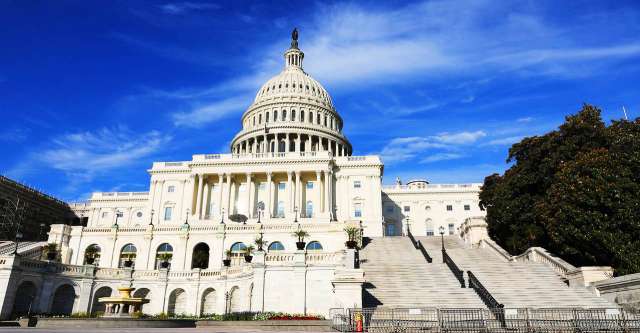Here is an article about our election process written by Frank DeVenuto.
With a close race in several key states, pending lawsuits, potential voting fraud, and the
media declaring former Vice President Biden as the new president, many across the nation are
confused about the process for electing the president of the United States.
What Do Our Laws Say?
The US Constitution,Article 2, section 1, states the president must be a natural born citizen, be at least thirty-five years old, and have been a resident of the United States for at least fourteen years. To appear on state
ballots, candidates must complete the appropriate paperwork and meet all deadlines, called ballot
access laws, for each individual state, and well before any primaries, caucuses, and the general
election. Individuals become a candidate in one of three ways: 1) Seek and earn a political
party’s nomination via caucuses or primary elections; 2) Run as an independent; or 3) Run as a
write-in candidate.
Caucus Versus Primary
As candidates travel the country speaking, engaging voters, and attempting to garner
public support, there are two basic ways candidates are selected – via caucus or primary.
Although not used as often, a caucus is organized by the political parties in which community
voters meet to discuss who is the best candidate. It is different in that caucuses require citizens
to attend meetings to participate in the nominating process, and in which voters try to sway other
local voters. This is one reason the Iowa caucus carries political weight as candidates and the
rest of the country see what issues are important to voters. At the end of the caucus, an election
is held in which delegates are selected at the county and/or state level who pledge to support the
majority candidate. Most often used and similar to a general election, a primary is an organized
event held by state governments in which voters cast ballots for the candidate of their choice,
with the winner being whomever receives the majority of votes. Most states have a closed
primary where voters can only cast ballots for the party in which they identify, whereas an open
primary allows voters to cast ballots for any candidate of any party. In a presidential primary,
the winner of each party is given a majority number of the state’s delegates to the
nominating convention. Washington and California have a jungle primary or top-two
primary in which a ballot lists all candidates without separation by party. The top two
vote recipients run off against each other in the general election, regardless of party
affiliation.
National Convention
Political parties host a national convention, in the months before a national
election, to select a final presidential candidates. The party presidential nominee is
determined by the majority vote of delegates attending the convention, and not the
individual ballots of voters. The presidential nominee then selects a running mate to
act as vice-president. Delegates are private citizens picked from amongst state
political party representatives.
General Election
At the general election, voters throughout the country cast their ballots for president and
vice-president. When casting their ballots, people are actually voting for a group of people
called Electors, who are part of the Electoral College, and have already been selected by the
candidate’s political party. If a majority of voters in a state vote for the Republican candidate for
president, the Republican slate of electors is elected. If a majority vote for the Democratic
candidate, the Democratic slate of electors is chosen. The Electoral College, established by
Article II, Section 1, Clause 2 of the US Constitution (and later modified by the 12th and 23rd amendments), is a unique method for indirectly electing the president of the United States.
Although the phrase “Electoral College” does not appear in the Constitution, it refers to the
process of electing the President. It says, “State shall appoint, in such Manner as the Legislature
thereof may direct, a Number of Electors, equal to the whole Number of Senators and
Representatives to which the State may be entitled in the Congress: but no Senator or
Representative, or Person holding an Office of Trust or Profit under the United States, shall be
appointed an Elector.” The electoral college was one of the compromises by which the delegates
were able to agree on the document finally produced. Founding Father James Wilson said, “This
subject has greatly divided the House, and will also divide people out of doors. It is in truth the
most difficult of all on which we have had to decide.”
Certifying
Each state is entitled to one presidential elector equivalent to each of its U.S.
Representatives and US Senators, plus three for the District of Columbia equaling 538 total
votes. A presidential candidate needs a majority, or 270 votes, to win an election. As soon as
practical (when election results are certified), the Governor of each state prepares seven
Certificates of Ascertainment, one of which goes to the National Archivist. On the first Monday
after the second Wednesday in December, electors meet in their respective States and vote for
President and Vice President on separate ballots. The electors record their votes on six
Certificates of Vote, which are paired with the six remaining Certificates of Ascertainment. The
electors sign, seal, and certify six sets of electoral votes. A set of electoral votes consists of one
Certificate of Ascertainment and one Certificate of Vote. At least six days before the meeting of
electors, states must make final decisions involving any voting discrepancies and/appointment of
electors. In 2020, December 8 is the deadline for resolving discrepancies and December 14 is
when the Electoral College votes.
Electoral votes (the Certificates of Vote) must be received by the President of the Senate
and the Archivist no later than nine days (December 23) after the meeting of the electors. If votes
are lost or delayed, the Archivist may take extraordinary measures to retrieve duplicate originals
but must have transmitted a new set no later than January 3, 2021 when the new Congress
assembles. Section 15 of 3 U.S.C. Ch. 1 requires the Senate and House of Representatives to
meet on the sixth day of January following every meeting of the electors to verify the certificates
and count the votes of the electors. As President of the Senate, the Vice-President presides over
the counting, announces the results, and then declares which persons have been elected. Any
objections to the electoral votes are made, submitted in writing, and be signed by at least one
member of the House and one Senator. If objections are presented, the House and Senate
withdraw to their respective chambers to consider the merits of the objection(s) under procedures
set out in Federal law.
No Winner?
In the event no candidate receives a majority or there is a tie, Article II, Section says,
“…if there be more than one who have such Majority, and have an equal Number of Votes, then
the House of Representatives shall immediately chuse by Ballot one of them for President; and if
no Person have a Majority, then from the five highest on the List the said House shall in like
manner chuse the President. But in chusing the President, the Votes shall be taken by States, the
Representation from each State having one Vote…” The 12th amendment changed the number of
candidates on the list from five to three. The U.S. House of Representatives votes to select a
president from the top three vote recipients. Each state only gets one vote regardless of the
number of U.S. Representatives. The District of Columbia does not vote since it has no voting member in the House of Representatives. In the event, a vice-president does not receive a majority of the electoral votes, the U.S. Senate will cast ballots for the vice-president, with each Senator casting one ballot. As per law, the elected President and Vice-President are sworn in on January 20 in the year following the general election.
In closing, only the Electoral College can declare via their votes, and read by Congress, the winner of the general election for President and Viced-President.

